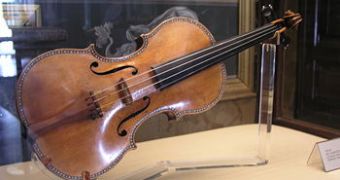It's almost amazing how violins made by applying three century old technology cannot be matched in sound quality by violins made through modern technology. No wonder some of these musical instruments value several hundred million dollars each and made Stradivari and Guarneri del Gesu some of the most famous master builders of classical Cremonese violins. But what is the secret to their success and what really made their violins unique?
Some researchers argue that one of the most important factors in producing violins with the distinct sound of Stradivarius and Guarneri lies in the chemical treatment applied to the wood during the fabrication process. Now the researchers say this was never the case, but rather that the density of the wood played one of the most important roles.
And since no one is willing to risk the damage of a unique musical instrument valuing several million dollars just to study its wood density, researchers decided to use a CT scanner in order to evaluate the properties of the material it has been made of. While studying the results of the scan, Dr. Berend Stoel of the Leiden University Medical Center realized that the density of the wood such classical violins have been made of is much more homogeneous than that of typical modern violins, which could just as well account for the superior acoustic properties.
Along with Dr. Jan Stolk, Dr. Stoel had previously developed a computer program that could evaluate the lung density of a patient from the data supplied by a Computed Tomographic scan. In order to accommodate the investigation regarding the wood density of the classical violins, Dr. Stoel had to design a brand new computer program in order to reveal an accurate wood density.
Leader of the study was the American luthier Terry Borman assisted by Dr. Steol. Five classical Cremonese violins and seven modern violins have been scanned during the investigations at New York respectively at the Mount Sinai Hospital, revealing that the overall density of both classical and modern violins were a match, albeit a comparison of the wood density between early and late growth appeared to be somehow lower in the case of the classical violins.
It is well known that the density of the material through which a sound propagates influences significantly the vibration efficiency of the material, therefore the tonal qualities of the instrument. Whether or not the differences in wood density are truly what makes these violins unique still remains to be seen, as researchers are continuously seeking for means to replicate the acoustics of these classical instruments.

 14 DAY TRIAL //
14 DAY TRIAL //